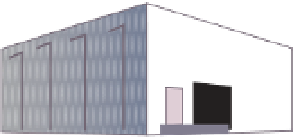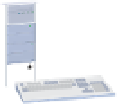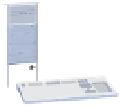Information Technology Reference
In-Depth Information
Distributed Databases
Distributed processing involves placing processing units at different locations and linking
them via telecommunications equipment. A
distributed database
—a database in which the
data can be spread across several smaller databases connected through telecommunications
devices—works on much the same principle. A user in the Milwaukee branch of a clothing
manufacturer, for example, might make a request for data that is physically located at cor-
porate headquarters in Milan, Italy. The user does not have to know where the data is
physically stored (see Figure 5.18).
distributed database
A database in which the data can be
spread across several smaller
databases connected via telecom-
munications devices.
Figure 5.18
3
The Use of a Distributed
Database
For a clothing manufacturer,
computers might be located at
corporate headquarters, in the
research and development center,
in the warehouse, and in a company-
owned retail store.
Telecommunications systems link
the computers so that users at all
locations can access the same
distributed database no matter
where the data is actually stored.
Warehouse
2
4
Research and
development
Retail outlet
1
User
request
Distributed databases give corporations and other organizations more flexibility in how
databases are organized and used. Local offices can create, manage, and use their own
databases, and people at other offices can access and share the data in the local databases.
Giving local sites more direct access to frequently used data can improve organizational ef-
fectiveness and efficiency significantly. The New York City Police Department, for example,
has thousands of officers searching for information located on servers in offices around
the city.
Despite its advantages, distributed processing creates additional challenges in integrating
different databases (information integration), maintaining data security, accuracy, timeliness,
and conformance to standards. Distributed databases allow more users direct access at dif-
ferent sites; thus, controlling who accesses and changes data is sometimes difficult. Also,
because distributed databases rely on telecommunications lines to transport data, access to
data can be slower.

















































































































































































































































